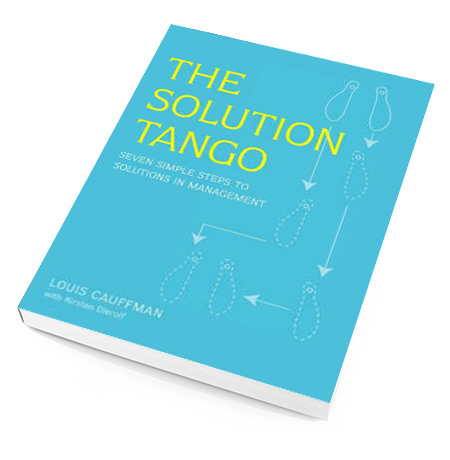Episode 2 – The Man in the Middle: A Solution Focused Feuilleton
With the new merger things have changed, job certainty has gone and so has the sense of teamwork.
Peter is confident in himself and his expertise. He never loses sleep over the fact that he, too, might have to leave with a golden handshake. During the merger process, Peter did his best to serve the new company. He worked hard to facilitate the amalgamation of the different “styles” of both companies.
From the beginning of the merger, Peter had to accept that someone from the other company would run the department. John, a thirty-seven- year-old engineer, became vice-president of operations — a fact that didn’t bother Peter that much.

Initially Peter got along well with John, but that soon changed. John is a man of the new company style. He has a bossy attitude and he doesn’t socialize. His contacts are strictly businesslike, and he demands written reports on all possible issues. What annoys Peter most was that John didn’t mind bypassing colleagues if it was convenient for him. John’s style is to voice his opinion without worrying about what others think.
Two cliques soon form within the department. One consists of the employees who follow John’s methods. Using the same bossy attitude, they push very hard to get their own way: team spirit is not their highest priority. When they are successful, John praises them and their success reflects well on him. The other clique consists of the old company’s remaining employees, who keep to the “old style” of consulting and cooperating with each other.
Peter finds it hard to cope with the fact that things aren’t going as well as they did “in the good old days.” He has tried talking to John about this several times, but in vain. John plainly said that the good old days might have been golden, but they now belong to the past: “If you can’t adapt, Peter, you might have to think about finding another job. We don’t have room for dinosaurs.”
Peter has experienced one frustration after another. His secretary of many years took an extended sick leave and was not replaced. Peter was told to supervise a tiny project for several weeks. Peter sent a memo to John stating: “In my humble opinion, I believe I’m overqualified and way too expensive for this small project.” John didn’t even respond.
Over the course of the last few years, Peter had organized monthly meetings for every member of his department. These meetings were commonly known as “milestone meetings.” The goal of these meetings was to provide an opportunity to all of his project teams to report on their work. Successes and mess-ups were openly discussed. Peter and everybody working in his team were convinced that these meetings were very useful for keeping an overall view on what was happening. When John took on his function as VP operations, he immediately abolished these meetings. He told Peter: “Your milestone meetings are an instrument of the past. They take up too much time, are too expensive, and I know that we can do without them.” He replaced them with what he called a “real project-oriented approach.” Each project team just had to consult internally and report to their project manager with written reports. Peter was on the copy list but John claimed the final decision: “I prefer to tell you upfront that when I think it is necessary, I reserve the right to talk to the project managers directly, even if this means bypassing you.” Peter was obviously not very happy with John’s sudden decision to cancel these “milestone meetings.” One can easily imagine the atmosphere in the department.
John worked very hard to keep an overview of all the projects. He liked to call himself “the spider in the web.” Everyone, even Peter, had to admit that he succeeded in keeping everything under control. John therefore was held in high regard by the top management, a fact he flaunted to all his colleagues and especially to Peter.
About six months after the merger, top management announced a major change in strategy. A substantial part of Solteam ’s traditional products would be discontinued and replaced by new products. This required building a new factory.
(to be continued)
Read episode 3
Back to episode overview
‘The Man in the middle’ is an excerpt from the book ‘The Solution Tango’ (and ‘Solution Focused Coaching’ e-book) by Louis Cauffman. This book presents a new approach to conquering the numerous challenges, problems, and failures that managers encounter at work, many of which are people-related. An important lesson identified in the book is that a manager must act as both the leader who provides direction for a team or company and as the coach who enables others to make the most of their skills, enabling the individual and the organization to succeed. A seven-step framework to enhance problem-solving capabilities, examples and tips, and a survival kit for sinking managers will help managers improve their people skills and learn how to approach everyday issues from a positive perspective.
 LOUISCAUFFMAN.COM
LOUISCAUFFMAN.COM
